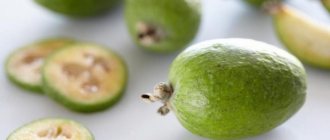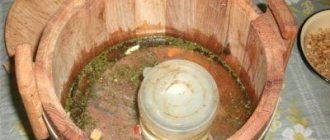November 2, 2015
Seal
- #lemon
- #olives
- #olive oil
- #present
- #rosemary
Categories: Pantry, Italian cuisine, Gifts from the kitchen, DIY, Fitness recipes
These olives are very fragrant and will successfully decorate the holiday table. They are very easy to make and taste and look just like store-bought specialties.
Thus, you can marinate black olives, but for them I would choose a different flavor composition, for example, spicy dried chili peppers, garlic and sun-dried tomatoes, which will also pick up the taste of the marinade, while simultaneously introducing their own special flavor.
After consuming marinated olives, never discard the marinade based on olive oil and wine vinegar. It can be used as a dressing for various salads, as well as marinate, in small quantities, poultry or pork before baking or frying. Such a fragrant marinade is valuable in itself.
And a few more words about lemon zest, although I have already written more than once, I still often receive complaints from inattentive readers that a dish prepared with lemon zest is bitter. You just need to differentiate between the zest and the peel. The thin yellow layer on the surface of the lemon is the zest; everything else is the peel. If the peel ends up in a dish without pre-treatment, such as for candied fruits, it becomes bitter. Carefully remove the zest. For this there is a special device called a zester; it removes it in thin, narrow strips. It’s also very convenient to do this with a vegetable peeler, which removes the zest in thin, wide strips that are ideal for this recipe. In a pinch, you can use a grater, but rub carefully so as not to remove too much. In general, this applies to the zest of all citrus fruits.
To prepare marinated olives, you may need a little more olive oil or vinegar, depending on the container in which you will marinate. If the oil and vinegar do not cover the olives completely, add oil and vinegar, without heating, in proportion.
If you are giving these marinated olives to someone, you can also put in the gift basket marinated Feta cheese, a jar of homemade mustard, homemade grissini with cheese and herbs, and something purchased at a delicatessen, such as a vacuum-packed stick of good salami, or dried ham or some mature cheese. In addition, it would not be amiss to have a good, small wooden board for serving delicacies on the table and a cheese knife, for example. Nowadays, inexpensively, you can buy wooden cutting boards in various shapes and colors in the markets. There are very good ones, made from natural wood in the shape of a leaf or various fruits. They have a decorative appearance and are perfect for placing various goodies on them and serving them on the table. It's stylish and not banal.
Ingredients
- 250-300 grams of your favorite canned green olives with pits
- 200 ml olive oil
- 70 ml white wine vinegar
- Zest of 1 lemon, removed in wide strips
- 1 sprig of rosemary, needles only
- 1 tbsp. black peppercorns
Cooking time: 5 minutes
1) Place the olive oil in a small saucepan along with the zest and rosemary. Bring to a boil over low heat.
2) Roughly crush the pepper in a mortar and add to the hot oil. Remove from heat.
3) Place the olives in a clean, warm, sterilized jar and pour hot oil over them.
4) Add vinegar and close the lid. Shake well. At first the marinade will become cloudy, and over time, after a day or two, it will become clear again.
5) Leave the olives to marinate for 2 days at room temperature, and then another 5 days in the refrigerator.
The marinated olives are ready.
Store in the refrigerator for up to 3 months.
Bon appetit!
See also
How to pickle olives correctly?
This was my first time pickling olives. This process took quite a long time. This recipe is suitable for green and black olives. I only tried green ones. It turned out very tasty. The recipe is as follows. The olives are thoroughly washed and sorted. Then the olives are poured with cold water. And they change it within 10 days. The bitterness needs to go away. Then drain the water and put it on a dry plate to dry. Prepare a brine from salt and water. Let the brine cool. Place the olives in jars, fill with brine. For taste, you can add lemon juice. Add olive oil on top and screw on the lid. Store in a dark and cool place. You can eat it after 60 days. I advise everyone to try it. Bon appetit.
In fact, there is no “right” way to pickle olives; all methods are good.
I like the classic method of pickling olives, which is used in almost all Mediterranean countries.
So, they take the olives, sort them, remove the tails and put the damaged ones aside (you can then make a separate jar of crushed olives from them).
A saline solution is prepared (this is when salt is added to water until the chicken egg begins to float). It’s better to take coarse sea salt; I can’t stand iodized salt.
The olives are washed, dried, placed in jars, and bay leaves, lemon or lime slices, and black peppercorns are also placed in the jars. Close the jars with a lid and place them not in the refrigerator, but in any dark place for 2-3 months.
If you want to speed up the process, you need to soak the olives in water for about a day before salting, constantly changing the water.
There are also express recipes, but this is for those who are not afraid of the natural bitter taste of olives. Chop the olives with a wooden hammer or masher, take 2 tablespoons of coarse salt for 1 kg of olives, place the olives in a jar, add olive oil, and close with a lid. Shake the jar every day and turn it over on different sides. After 15 days you can try.
Salted olives are not only tasty, but also very healthy due to the trace elements they contain. If you try a raw olive, it will be very bitter, but when salted, all the bitterness goes away. First, we peel the olives, wash them, and cut them.
Next, fill the olives with water and leave them for a day. The next day, rinse and fill with water again. We repeat the procedure until all the bitterness comes out of the fruit. When the olives almost stop tasting bitter, fill them with salt water. You will need 1 glass of salt per seven glasses of water. Salt until done. There is another well-known method. Take three parts olives and one part salt on them. We put it in jars and shake these jars every day. The sample can be taken after ten days. Then we store the jars of olives in the refrigerator.
I’m not an expert, but I have some experience in pickling olives, even though it was a long time ago.
I'll share what I know.
Most often, green fruits, that is, unripe ones, are salted. Due to their natural characteristics, they are very bitter and it is simply impossible to eat them fresh. Therefore, they are always pre-soaked in water.
How it's done:
Sort by size, remove spoiled ones, wash.
The olives are first split by hitting them with a hammer, a special stone or the bottom of a glass. The fruit should crack slightly, but not all the way to the bone; there is no need to break it into pieces.
Some people make cuts, some do it faster. This manipulation is to facilitate the release of bitterness.
Fill with water, maybe lightly salted. It is advisable to change the water daily, this will speed up the soaking process. On average, depending on your taste and variety, from 7 to 14 days. How to determine when it’s time - just try some water. If it is not bitter, you can continue with further steps. If you want it with a little bitterness, you can start earlier.
Drain the water. Prepare jars or plastic bottles. Brine can be made only with salt and citric acid. For 1 liter of water - 7 tablespoons of coarse salt (it can be sea salt) and a lemon on the tip.
If you want, you can add chopped hot peppers, lemon, cloves, garlic, etc. to your taste.
Pour the olives into the container, leave some space on top, and pour in brine to cover the fruit. Add olive oil on top; it will not allow the fruits to rise above the liquid level.
Close with lids and put in a dark place. After three days you can try it, but the longer it sits, the better it tastes.
About the blacks. If you think that black olives from the store are natural, then you are mistaken. There are no such things in nature. Store-bought ones are tinted. The real ones have a dark, uneven color. These are ripe olives and are most often processed into oil. There are several varieties that are pickled, but use wine and wine vinegar for them.
Or they do it in dry salting. 2 kg of olives (not cut) are covered with 1 kg of coarse salt. The barrel (jar) is placed on a barrel and rolled twice a day. If the container is small, then simply shake it. Periodically drain the juice. And so on for two weeks. After this, it is separated from the salt, washed and dried. They look wrinkled and resemble prunes.
In principle, they are already ready, you can eat. Or put it in a jar and fill it with olive oil. These don't last long.
Benefits of canned olives
The combination of microelements in the canned snack makes it healthy when consumed in moderation and in the absence of contraindications. Here's what olives can do:
- Helps fight bad cholesterol.
- Participate in blood pressure regulation.
- Cleanses and strengthens the walls of blood vessels, protects against the formation of atherosclerotic plaques.
- Protects the heart and prevents blood clots.
- They have a positive effect on brain function, strengthen memory, increase the activity of the main nerve center, and improve concentration.
- The content of healthy fats and antioxidants allows you to fight the formation of mutated cells, thereby preventing the development of tumors.
- They normalize metabolism, satisfy hunger well and help fight excess weight.
- Fiber has a positive effect on digestion, eliminates constipation and flatulence.
- Helps normalize intestinal microflora, preventing dysbacteriosis.
- Participate in the removal of harmful substances from all organs and systems.
- Strengthen the nervous system, help fight apathy, stress, and depression.
- Improves visual functions.
- Strengthen the immune system.
- Participate in the fight against inflammatory processes.
There are separate benefits of canned olives for men, women and children.
For men For men's health, the fruits are especially beneficial for the following:
- Vitamin E supports sperm quality, improves blood circulation and protects testosterone from destruction.
- Healthy fats normalize the condition of blood vessels, thereby increasing sexual function.
- The combination of B vitamins prevents baldness and improves new hair growth.
- Zinc is necessary for the production of testosterone.
To combat “male” disorders and diseases, patients are recommended to include 10-15 olives in their diet daily.
For women The female body also receives great benefits from regular consumption of olives:
- The condition of hair and skin is normalized, wrinkles are reduced, inflammation in the face goes away, and nail and hair growth improves.
- Teeth and bones are strengthened, this is especially important during the period of bearing and feeding a child, as well as during menopause.
- Healthy fats and antioxidants have a positive effect on fertility.
- B vitamins protect against the formation of varicose veins and help fight them.
And the low-calorie snack fits perfectly into any diet program!
You can eat olives in moderation during pregnancy if there are no contraindications. This product is considered hypoallergenic, it normalizes fat metabolism and improves the construction of new cells, which is extremely important for the development of the embryo. However, olives should only be consumed after the 1st trimester of pregnancy.
For children The greatest benefit of fruits for a child’s body is the regulation of calcium, phosphorus and potassium levels. These elements are necessary for the development of strong bones and cartilage, as well as for the formation of a muscle corset. Vitamins A and E have a positive effect on eye and skin health.
Features of seeds The seeds contain the same useful elements as the pulp of the fruit. It is recommended to use them in the form of ground powder. Here are the benefits of seeds:
- They help fight alcohol intoxication and remove harmful substances.
- They have antioxidant properties.
- A specific feature is that the seeds can be used as a natural sorbent to cleanse the urinary system and gallbladder of sand, small stones and other deposits.
- Helps fight respiratory diseases.
- They have enveloping properties, protecting the stomach from erosions and ulcers.
It is forbidden to eat crushed or whole bones - they can get stuck in the intestinal passages and other parts of the excretory system.
Pickling olives
European olive is an evergreen Mediterranean plant that thrives on the southern coast of Crimea. The ancient Greeks were the first to bring olives to the peninsula, founding the colony of Panticapaeum in the 6th century. BC. Then the olive spread throughout the southern coast and today the oldest specimens are found here. In the Nikitsky Botanical Garden there lives an olive tree, the age of which biologists determined by radiocarbon analysis and set the figure to 2000 years. Lev Platonovich Simirenko, who studied the history of Crimean fruit growing, wrote: “In ancient times, that is, in the heyday of the Hellenic colonies in Taurida, gardening in the Crimea in the broad sense of the word was widely developed and stood at a high degree of perfection. It is characterized mainly by the fact that at that time, on the southern coast, primary attention was paid to the culture of purely southern plants, such as the fig tree, pomegranate, olive tree, noble laurel and, finally, the turpentine tree.”
Later, with the Ottoman conquest of Crimea, as well as the eviction of Greek colonies from the peninsula, the cultivation and tradition of processing olives gradually declined. But at the beginning of the 19th century. With the advent of the Nikitsky Botanical Garden, olive groves began to spread again on the peninsula. Count Mikhail Semenovich Vorontsov played a major role in introducing olive trees into culture on the peninsula. Thanks to him, olives gained popularity and in many estates they were grown for the purpose of producing oil and pickling the fruit. One of the areas for selling South Coast olive oil is the Kerch fishery, where it was used for rubbing dried belugas. The fish acquired a refined taste and did not spoil for a long time.
Recipe “Salting olives - a simple way”:
Sort and rinse the olives. Place in a container, add water, and leave for 1-2 days.
After 2 days, drain the water; it will be a bright burgundy color (if the olives are black) and very bitter. Fresh olives are sooooo bitter. Make a cut on each olive
Again we put it in a container in which we will salt it and fill it with water. Leave for 1-2 days. I salt in a plastic barrel (for food grade) 30 liters.
After 2 days, drain this water.
Prepare the brine. Add salt to boiling water. Due to the large volumes, I prepare the brine in portions.
I cool the finished brine a little and perform the old-fashioned test with a fresh egg: the egg floats and does not sink. This indicates that the brine is sufficiently saturated. I pour it into a barrel of olives. I do this until the brine completely fills the barrel (I used 4 kg of salt for the brine).
Composition and calorie content
If you carefully consider the balance of nutrients in olives, you will find the following:
- 100 g of product contains the most fat – 14 g;
- they contain only 0.5 g of protein;
- carbohydrates in the product 0%;
- up to 70 g is taken up by water;
- as well as 2.2 g of fiber - dietary fiber.
Canned olives contain many vitamins, but E is the leader among them - 22.7%, or 3.4 mg. The second place is taken by vitamin A - 25 mcg.
Mineral content of olives:
- Potassium - 42 mg.
- Sodium - 1566 mg.
- Calcium - 52 mg.
- Magnesium - 11 mg.
- Phosphorus - 4 mg.
- Iron - 0.49 mg.
- Copper - 0.12 mg.
- Zinc - 0.04 mg.
- Selenium - 0.001 mg.
Olives are rich in fatty acids, the most they contain is Omega-6 - 1.215 g per 100 g. They also contain 0.092 g of Omega-3, 11 g of oleic, 1.2 g of linoleic, less than 1 g of stearic, palmitoleic, gadoleic and linolenic acids.
In black fruits, the content of substances differs slightly.
Marinated olives - 4 simple recipes
Ksenia Garastyuk • 10/27/2018
It would seem - take the olives out of the jar and serve them to the table. But you can make them even tastier and healthier by marinating them in olive oil. The appetizer can be savory or spicy - it all depends on the components added to the marinade. Marinated olives are suitable for creating canapés with soft cheese (goat, feta or feta cheese), or for serving as an independent snack.
Choose a suitable recipe and surprise your guests - lovers of gourmet snacks will not remain indifferent to such an aesthetically attractive dish.
You can marinate olives with or without pits - the latter require less time to soak in the mixture.
Marinated olives with rosemary
You can use fresh or dried herbs. But remember that fresh rosemary is much more fragrant and use less of it than dried. Dilute this essential aroma with cloves and black pepper.
Ingredients:
- 1 can of olives;
- 4 tbsp olive oil;
- 2 tablespoons wine vinegar;
- 2-3 peppercorns;
- 2 cloves;
- a pinch or sprig of rosemary;
- lemon zest;
- salt.
Preparation:
- Wash the olives and dry them.
- Add rosemary, zest, pepper and vinegar to olive oil. Heat on the stove.
- Bring the marinade to a boil, let it cool slightly and pour it over the olives, adding salt.
- Leave the olives to soak for 5-6 hours.
Canned olives in medicine
Olives are used in a therapeutic diet for various diseases:
- atherosclerosis;
- medium-vascular pathologies;
- disorders of carbohydrate or fat metabolism;
- diabetes mellitus and elevated blood glucose levels;
- disturbances in the functioning of the nervous system;
- anemia;
- arthritis, osteochondrosis and other diseases of joints and bones;
- digestive problems, especially: constipation, bloating, flatulence;
- obesity;
- infectious diseases.
Before including olives in your daily diet, you should consult your doctor.
Spicy marinated olives
If you know how to marinate olives, then you will have no problems preparing a decent appetizer to go with vermouth. They highlight its taste. Capers and lemon zest help dilute the spiciness.
Ingredients:
- 1 can of olives;
- 30 ml wine vinegar;
- 30 ml olive oil;
- 2 garlic cloves;
- a small pod of hot pepper;
- 7-8 capers;
- 1 lemon;
- oregano.
Preparation:
- Wash the olives and dry them.
- Chop the pepper and garlic very finely.
- Combine oil, vinegar, capers, pepper and garlic.
- Cut the zest from the lemon and add it to the total mixture. Squeeze the juice out of the citrus itself.
- Place the marinade on the stove. After boiling, hold for 5 minutes and let cool slightly.
- Pour the resulting brine over the olives and put them in the refrigerator for a day.
How to deliciously marinate olives with cucumbers
If you often prepare cucumber twists and there is not much variety in all of them, then you will like this recipe. Juicy cucumbers and aromatic olives make a wonderful bright green appetizer. They will last a long time with their natural flavors, vibrant color palettes and fresh spicy aromas.
Ingredients you will need:
- one and a half kilograms of small cucumbers;
- four hundred and seventy grams of fresh olives;
- eight peas of allspice;
- seven clove buds;
- seven grams of coriander;
- eight grams of nutmeg;
- 380 milliliters of red wine vinegar;
- eleven grams of iodized salt;
- one bunch of dill;
- one bunch of cilantro.
How to prepare this preserved olives and cucumbers:
- We wash all the necessary products with water. Chop the greens and nuts into small pieces, cucumbers into half-centimeter thick slices, and leave the olives whole. Place all ingredients evenly into sanitized jars.
- To pour, you need to pour water, red wine vinegar, salt and pepper into the bowl and keep it on the fire for seventeen minutes, and pour the contents of the bowl into the preparations.
- Sterilize jars with twists using the method described in the fifth recipe. We seal the jars and wrap them in thick cloth, leave for sixteen minutes. Then place the cooled containers with the snack in a suitable place (cold and dry).
Express recipe for pickled olives
If you want to get a less spicy dish, then you should not keep the appetizer in brine for too long. The result is marinated olives at home, which will decorate any table and go perfectly with black bread. You can then use the remaining marinade as a salad dressing.
Ingredients:
- 1 can of olives;
- 4-5 tablespoons olive oil;
- black pepper;
- dried or fresh rosemary;
- thyme;
- 3 garlic cloves.
Preparation:
- Wash and dry the olives.
- Place in prepared glass container.
- Add crushed garlic, herbs and spices. Shake the jar until all ingredients are thoroughly mixed.
- Top the olives with oil.
- Place in the refrigerator for 4 hours.
How are olives different from black olives?
The most common misconception about olives is that black olives are a different type of plant, taken from different trees. Also, some believe that olives are olives stained with chemicals and therefore more harmful.
Important! Olives and olives are the same fruits, taken from the same tree, but undergo different technological processing. Moreover, the concept of “olives” is used only in the territory of the former USSR; in Europe they are called black olives.
Fresh olives are not suitable for use as snacks - they are very bitter. Therefore, a canned product is used in most cases; it differs only in manufacturer and quality. And fresh fruits are used only for the extraction of healthy oil.
Peculiarities of growing olives This tart delicacy grows in southern Europe and Asia, as well as in Africa. The olive tree is an evergreen plant from the olive genus. The fruits are collected before they ripen and sent for preservation. Fresh snacks are harder than canned ones and differ in color - ripe fruits are brown and dark purple.
The methods of harvesting the plant also differ: unripe olives are collected by hand and placed in baskets, while ripe ones are simply shaken from the tree onto hammocks stretched near the ground.
How do olives turn black? The marinade gives the fruit a dark tint. Before preservation, they undergo calibration: some of the fruits are sent to the marinade immediately so that they retain their natural shade, the rest are sent to canisters, where they lie under compressed air for 10-12 days and become black. The olives are then placed in brine.
First, the raw materials are stored in large tanks connected to each other and located underground to maintain a constant temperature. For further processing, the fruits are pumped out with an air pump and processed: seeds are removed and stuffed. At the same stage they undergo calibration. You can find crayons and large olives on sale.
Misconceptions There are 4 misconceptions regarding black and green olives:
- Black ones contain less nutrients. When processed the same way, both types retain the same amount of minerals, vitamins and fatty acids.
- Black ones contain more dyes and preservatives. There is actually no food coloring added to the brine.
- Blacks have too much iron gluconate. During oxidation, compressed air is supplied to the tanks, as well as less than 1% iron, which improves the blackening of the olives. It is safe for health.
- Black olives are riper. In fact, black and green appetizers have the same degree of ripeness. Their hardness is regulated by different concentrations of salts in brines.
Thus, black and green fruits are the same in the content of nutrients, ripeness and quality. However, they differ in color, brine composition, processing technology and consistency.
Marinated olives with sun-dried tomatoes
This snack is not only very tasty, but also healthy - olive oil improves appearance and activates brain function. Add your favorite spices to make the dish even tastier and more aromatic.
Ingredients:
- 1 can of olives;
- 1 tbsp sun-dried tomatoes;
- 1 lemon;
- rosemary;
- black pepper;
- 4 tbsp olive oil;
- 2 garlic cloves.
Preparation:
- Wash the olives, dry them, and place them in a glass jar.
- Add finely chopped sun-dried tomatoes there.
- Also add rosemary and pepper into the container.
- Add squeezed garlic.
- Squeeze the lemon juice.
- Pour olive oil on top.
- Shake the jar to mix all the ingredients.
- Leave to infuse in the refrigerator for 5-6 hours.
Today it can be difficult to surprise guests with delicious appetizers. But marinated olives are an exception. This not very popular dish can break up the routine of the holiday table and decorate the buffet table.
Salted olives
Salted olives are apparently the very first olives that humans consumed.
It is well known that olives are not edible without additional processing. They are very bitter and viscous. There is a legend that once upon a time several olives fell into the sea and lay there in shallow water for some time. Then some fisherman or peasant woman walked along the shore, saw the berries, tasted them and were surprised to discover that the bitterness and viscosity had disappeared. The fruits became pleasantly salty and soft. This legend can be supported by the fact that even now on some Greek islands there is such a method of preparing olives: a large basket filled with olive fruits is immersed in the sea every day for a certain time for a week and a half. Once the olive flesh turns dark brown, the olives are ready to eat. Isn't it surprisingly simple? An interesting fact is that such a seemingly simple recipe is not widely used these days. Apparently, the taste properties of such olives are not good enough. The modern recipe for simple pickling and leaching of olives is somewhat more complicated and takes longer. Its essence is as follows. For the first ten days, the olives are simply soaked in cold water. Then the water is salted with ordinary salt. Some more time passes. The saline solution is changed to a less salty one, then to another less salty one. The process takes from four to eight, or even up to ten weeks. It should be noted that in the first days, when the water is still fresh, it must be changed almost every day. Many people believe that fresh water should not be used at all, since putrefactive bacteria can form in the olives. But it won't be noticeable right away. Now imagine that you have completed almost the entire technological cycle and near the end you discovered that your idea was a fiasco - the olives were rotten. Why might this happen? If all the olives are strong and good, then they will survive fresh water remarkably well, but if at least a few fruits are a little spoiled, they will spoil the rest. In this regard, there are recommendations to add at least a little salt to the water at the first stage. In order to “facilitate” the start of biochemical processes for olives, it is advisable to cut them. This is a rather tedious procedure, because you need to cut each berry. It is also worth remembering that all olives must be under water. To do this, they are covered with something (for example, a plate) slightly smaller in diameter than the container in which they are located.
Olives prepared in this way should also be stored in a salty solution in a dark and cool place. Some people add a slice of lemon to the container with olives.
Just for information: if you look at the material about dried olives, they turn out salty not because of the brine, but during the drying process, but what’s interesting is that the olives are sprinkled with salt. As a result, the taste of such olives is also salty.
This remark led us to the second - dry method of pickling olives. Its essence is that you take salt, take olives, pour everything onto burlap or tarpaulin and mix thoroughly. There should be a lot of salt. It should literally cover and envelop the fruit. After a week, all this is poured into another container, the salt is winnowed, mixed with olives again and again left for some time. After about a month, the olives are separated from the salt, placed momentarily in boiling water and then dried overnight. Olives prepared in this way are stored in the freezer of an ordinary refrigerator. These olives should be used within a month.
In most cases, green olives are used for pickling. But you can also salt black ones. The salting process will differ in that the black olives are doused with boiling water and the water is allowed to soak in for 24 hours. After this, the olives are wiped dry. Next, the pickling process is similar to that described above, but unlike it, after a week you will need to drain the released juice. Dark olives should be stored with a little olive oil.
As you can see, the process of preparing salted olives, although not very complicated, is lengthy and requires a certain amount of room for maneuver. And storing olives is not so convenient. Usually, residents of the regions where they grow afford salted olives. It is much easier for ordinary residents of central Russia to buy ready-made olives either in an ordinary supermarket or, if they claim a quality product, then in special stores selling olives and olive oil.
Go to the OLIVES section
Random recipe
King prawns in honey with salted olives
To prepare this fornication we don’t need much. First things first, you need to stock up on shrimp. Ordinary change won't do. Tiger ones are also not worth taking. All the same, when heat treated they will become ordinary royal ones. So. We choose king prawns that are not frozen. Defrost and drain the water. In Spain, for example, even if you buy frozen shrimp, when defrosted they... will simply defrost. This is not the case in our country. When thawing a “domestic product”, the loss of live weight will be about fifty percent. This is worth considering when purchasing. You just need to know that if you want to get a kilogram of shrimp, you need to buy two. Place the defrosted shrimp in a frying pan, add olive oil and honey. Yes, yes, honey! You can also add chopped red bell peppers. Fry the shrimp and place them on a plate. Separately, a little to the side (but on the same plate) are red peppers and, of course, salted green olives. You can add a sprig of parsley, but do not chop it. Well, and a slice of lemon. It would seem that instead of them you can put anything, for example, pickled cucumbers. But no. Try it with olives and cucumbers. There is a difference. The taste of shrimp in honey fried in olive oil can only be set off and emphasized by salted olives. Medium caliber is best.
Required Products:
- Shrimp Salted olives Honey Red bell pepper Olive oil Lemon
News from the “Salted olives” section
Olive and tomato twist
The olive fruit in this winter twist recipe gives the tomatoes a unique spicy aroma and tart flavor. This appetizer will be in perfect harmony with any meat, fish and vegetable dishes, giving them a refreshingly sweet taste. In addition, the preparation contains a large amount of vitamins that protect the body from autumn vitamin deficiency (a disease accompanied by corresponding symptoms due to a lack of essential substances for the body).
Ingredients needed for half a liter of this twist:
- three hundred grams of tomatoes;
- one hundred and thirty grams of olives;
- three inflorescences of dill;
- one horseradish leaf;
- three bay leaves;
- one bunch of basil;
- one bunch of parsley;
- six cloves of garlic;
- four grams of red hot pepper;
- three black peppercorns;
- two liters of distilled water;
- one hundred eighty ml. fruit vinegar;
- one hundred and thirty grams of sugar;
- thirty-five grams of salt.
Prepare the workpiece as follows:
- We wash all products that require this under water. Cut the horseradish root into strips, cut the tomatoes into slices half a centimeter thick, and leave the olives as is. We place exactly all the products from the list into sterilized jars.
- For the marinade, pour water, fruit vinegar, salt, add sugar into an iron (or glass) bowl and keep on fire for fourteen minutes, and pour the mixture into the twists.
- Sterilize the twists using the method described in the fifth recipe. We roll up the jars and wrap them in a blanket to cool the day. After this, put the infused containers with the snack in a dry and cold room for further storage.
When preserving olives, you retain most of the nutrients (the rest are evaporated during heat treatment), which gives you the opportunity to enjoy their healing and health-improving properties even in the cold season. Olives are an excellent prevention of diseases of the cardiovascular and digestive systems, calm and strengthen the nerves, remove cholesterol, toxins and heavy salts, have a beneficial effect on muscle and bone tissue, increase male potency and the female reproductive system, add strength and energy.
For our readers, we have specially prepared other interesting recipes for preparations, such as: pickled milk mushrooms, marinated ginger and salted dill.










